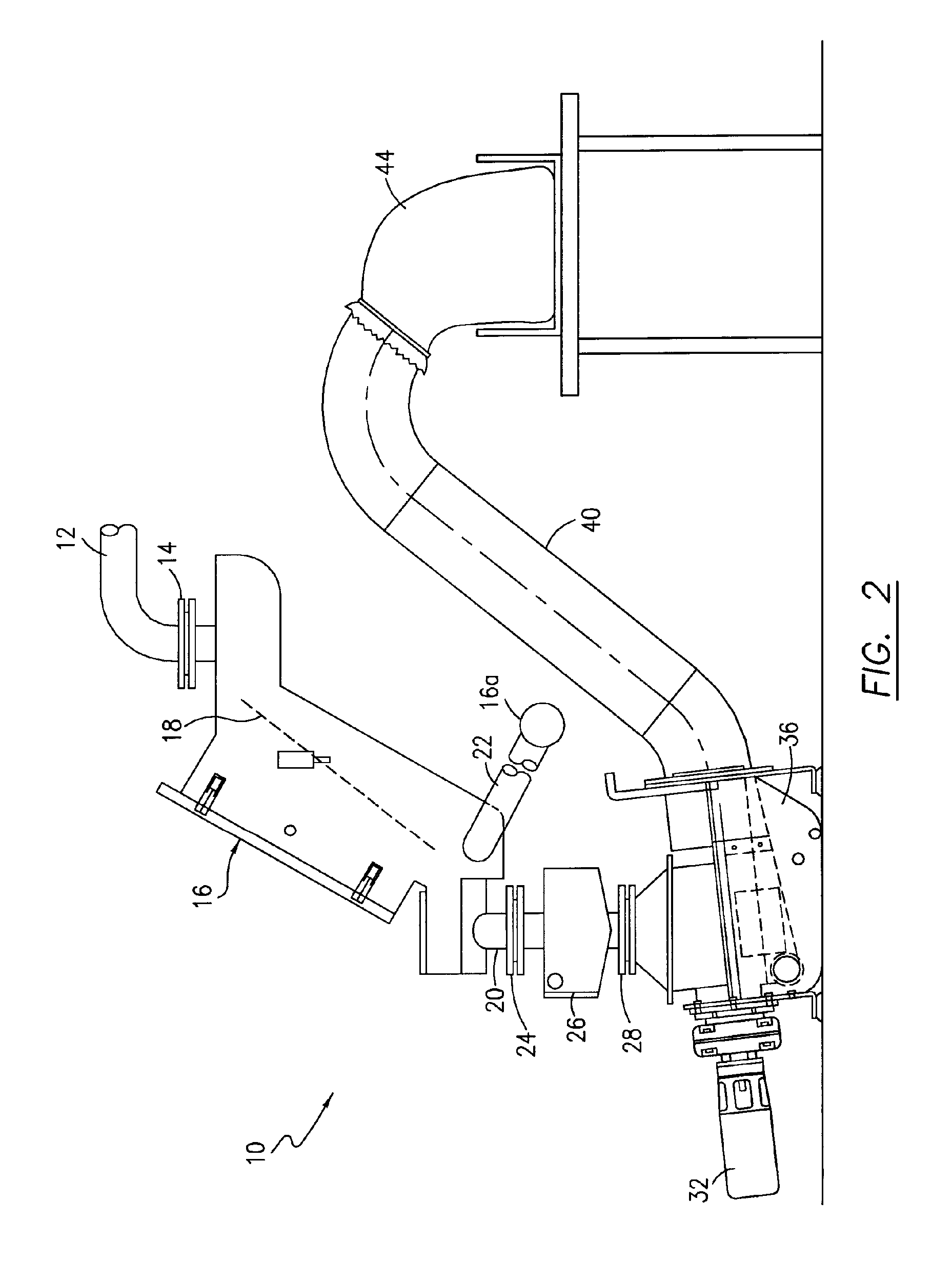Shipboard human waste treatment for removing solids
- Summary
- Abstract
- Description
- Claims
- Application Information
AI Technical Summary
Benefits of technology
Problems solved by technology
Method used
Image
Examples
Embodiment Construction
[0013]Referring now to FIG. 1 and FIG. 2, the present invention is shown generally at 10 schematically comprising a solid waste separation and compaction system that is connected to a shipboard toilet system 12. The toilet system 12 uses vacuum toilets that connect through valve 14 and has an outlet into a solid waste separation tank 16. The system is maintained under vacuum by a vacuum pump 16a connected directly into said separation tank 16. The vacuum pump 16a receives the liquid waste while solid wastes are diverted into the solid waste separation tank 16. By removing all of the solid wastes upstream of the vacuum pump, the vacuum pump 16a functions longer with far less maintenance, and therefore, more efficiently. Separation tank 16 may be a large, inclined stainless steel tank that includes a liquid / solid separating screen 18 disposed across its entire width so that waste solids coming from the toilet system 12 through valve 14 will be separated and maintained apart from all l...
PUM
| Property | Measurement | Unit |
|---|---|---|
| Pressure | aaaaa | aaaaa |
| Flow rate | aaaaa | aaaaa |
| Width | aaaaa | aaaaa |
Abstract
Description
Claims
Application Information
 Login to View More
Login to View More - R&D
- Intellectual Property
- Life Sciences
- Materials
- Tech Scout
- Unparalleled Data Quality
- Higher Quality Content
- 60% Fewer Hallucinations
Browse by: Latest US Patents, China's latest patents, Technical Efficacy Thesaurus, Application Domain, Technology Topic, Popular Technical Reports.
© 2025 PatSnap. All rights reserved.Legal|Privacy policy|Modern Slavery Act Transparency Statement|Sitemap|About US| Contact US: help@patsnap.com



